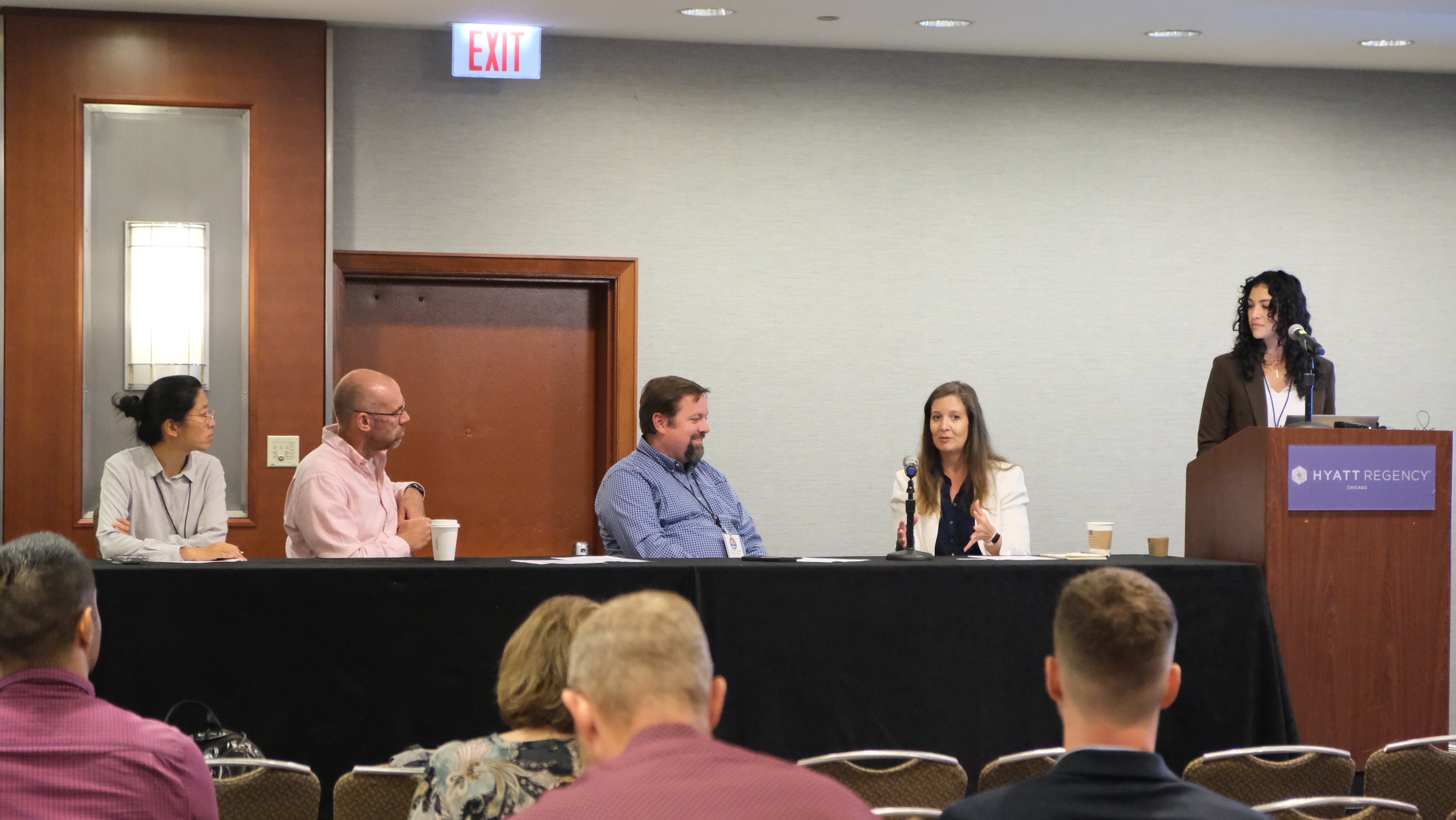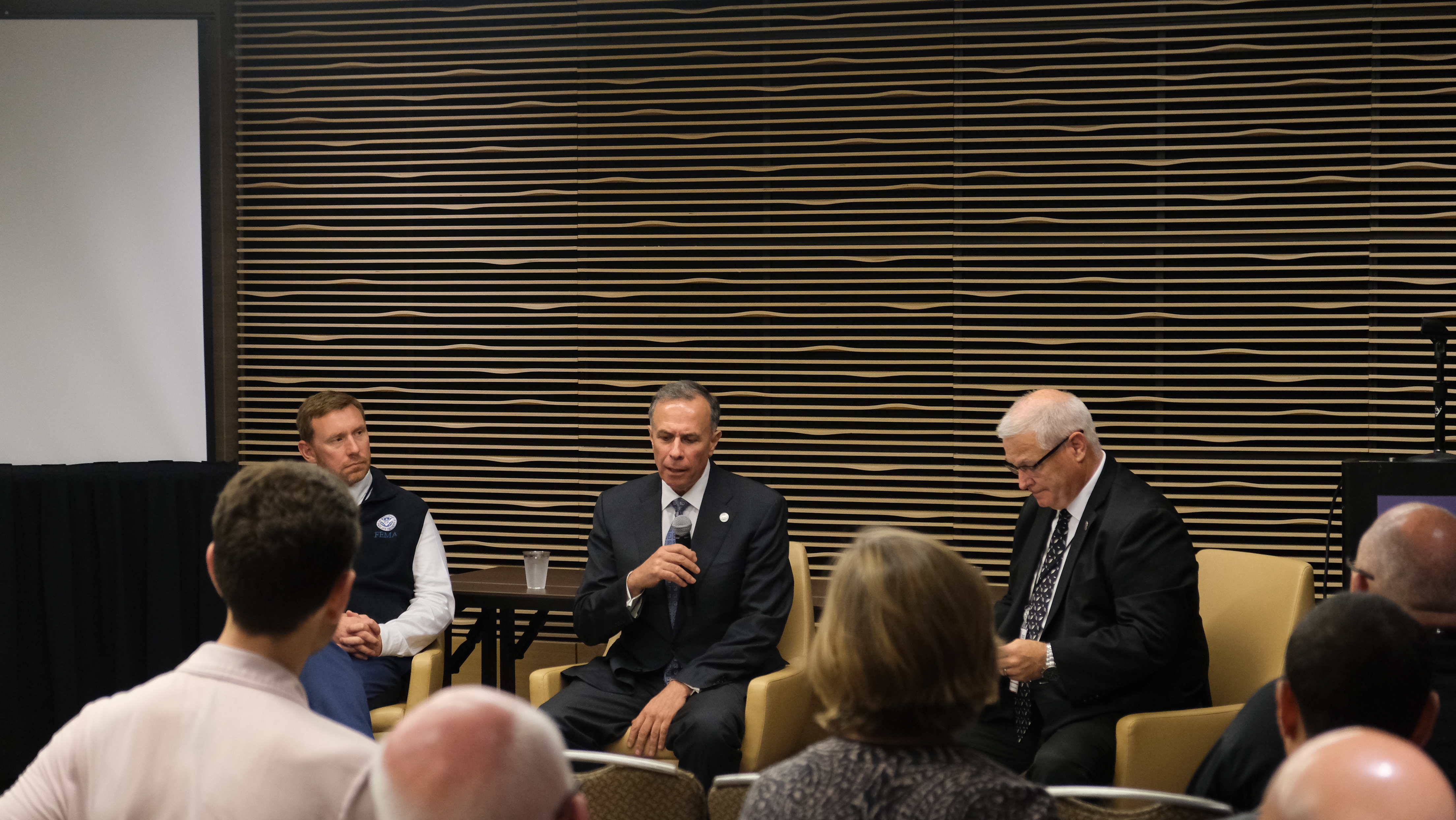Panel Highlights Tools for Critical Infrastructure Resilience
Predictive analytics inform risk analysis for disaster response

Predictive analytics, modeling, and simulations help inform risk analysis for disaster response.
(Composite image by Jeff London | Pacific Northwest National Laboratory)
When emergencies threaten critical infrastructure, analysts and decision-makers rely on robust risk analysis to protect vital systems like the electrical grid. At the National Homeland Security Conference in Chicago, researchers from Pacific Northwest National Laboratory (PNNL) joined the Department of Homeland Security Cybersecurity and Infrastructure Security Agency (CISA) in sharing the latest modeling and operational tools aiding response.
“Emergencies don’t follow jurisdictional boundaries. When disaster strikes, analysts nationwide need tools to inform rapid and efficient response. Through collaboration with CISA, we are building advanced analytic tools and capabilities to better understand how to manage risks from a variety of threats to the nation’s critical infrastructure,” said Ann Lesperance, PNNL director for the Northwest Regional Technology Center.
Analyzing risks to critical infrastructure
The panel presentation, titled “Collaborative Research and Development of Operational Tools Developed by CISA to Address Critical Infrastructure Resiliency,” highlighted PNNL’s work being done on behalf of the National Infrastructure Simulation and Analysis Center (NISAC). Panel participants included PNNL’s Brent Daniel, Xue Li, and moderator Krystal Ayala alongside Merideth Secor, NISAC sector chief, and Dr. Jason Reinhardt from Sandia National Laboratories.
“Critical infrastructure represents a complicated system of systems. Through modeling and simulations, we can better understand the interdependencies of those systems and their assets and how their disruption could impact continuity of operations in things like public health and national security,” said Daniel, PNNL NISAC principal investigator and data scientist.
NISAC is managed by the National Risk Management Center within CISA and works with organizations like PNNL, other national laboratories, and federally funded research and development centers. Through these collaborations, the center is maturing risk analysis capabilities to empower critical infrastructure decision-makers with actionable and forward-looking information.
“When we look at the convergence of cyber and physical systems like with our critical infrastructure, we’re looking at risk at scale—and we can help reduce that risk through partnerships,” Secor said. “Through NISAC, we are convening top minds from federally funded research centers, from our national laboratories, into a partnership network that can build and test models, run simulations, and help integrate tools used by analysts to better inform decision-making.”

Building a vision for future solutions
During the conference, PNNL staff connected with representatives from across the homeland security community on their research in emergency management and first responder technology. For example, the Department of Homeland Security Science and Technology Directorate recently announced a $1.67 million award for PNNL to research the future of emergency management. The project will harness PNNL’s technical expertise and capabilities to inform research, development, and innovation priorities for the emergency management community. Concurrently, PNNL is leading research activities to better understand responder technology requirements to inform future technology planning and development.
“This was a great time to connect with first responders and emergency managers and hear from them directly about their technology needs and issues in the field. This type of feedback and engagement helps drive our research, which ultimately helps us enable safer and smarter solutions,” said Lesperance.

Published: September 5, 2023